With the announcement of the Green Deal, the EU has been heading towards stricter climate targets and faster decarbonization objectives. The Commission and Member States first had to agree on a new headline target for 2030, while enshrining the end-goal of climate-neutrality by 2050 in EU legislation. With the recent agreement to reduce greenhouse gas (GHG) emissions by 55% by 2030, it is already time to review and adjust the EU measures only recently presented in the 2018 Clean Energy Package, to fit the new decarbonization objective. Hence this “Fit for 55 Package”, which includes the Renewable Energy, Energy Efficiency, and Energy Performance of Buildings Directives.
As the name suggests, this new set of measures should lead EU countries towards the GHG reductions needed to meet the goals of the Paris Agreement. What has become clearer since the drafting of the 2018 measures, is that electrification can be entrusted to decarbonize an even larger number of end-uses, such as road transport and domestic heating. Indeed, electrification is now being increasingly understood as the most cost-efficient way to decarbonize our economy and comes with additional benefits in terms of jobs, consumer engagement, health and system efficiency.
As the current rate of electrification still remains too low, with a projected 25% to 30% share in our energy system by 2030, this Fit for 55 Package presents an unmissable opportunity to secure the scale up of electrification needed to reach our new GHG target.
Through the Electrification Alliance, EuropeOn has been collaborating with like-minded stakeholders of the electricity value chain to promote electrification as the best path forward for the EU’s energy system. This influential Alliance includes Avere (the EU association for electromobilty), Eurelectric, the European Climate Foundation, the European Copper Institute, the European Heat Pump Association, Renewables Grid Initiative, SmartEn (Smart Energy Europe), SolarPower Europe, WindEurope and EuropeOn.
While about 12 pieces of legislation are concerned with this overhaul, the Electrification Alliance has formulated its strategy in 5 key points.
- Carbon Pricing & Energy Taxation
In most cases, fossil fuels benefit of a lower taxation level than electricity, which is often subject to high taxes, levies and charges. This is incoherent with the environmental impact of these energy carriers and with our climate objectives. In this regard, the EU Emissions Trading System and Energy Taxation Directives should be aligned with the new emissions reduction targets.
- Renewable Energy
Electrification must be supported by increases in renewables through the EU Renewable Energy Directive and ambition in this regard must match the new climate targets, with more emphasis on targets for sub-sectors (e.g. transport, heating) and on flexibility, and by facilitating overly lengthy permitting procedures.
- Energy System Efficiency
With the revision of the Energy Efficiency Directive and the Renovation Wave, we must harness the efficiency of electrification at both system and end-use level, with more demand response, a more regularly updated PEF (primary energy factor) coupled with greenhouse gas emission factors, and by applying the Efficiency First principle across the energy system.
- Electrification of Buildings
As a revised Energy Performance of Buildings Directive will also come at the end of the year, this is the time to ensure that our buildings are fit for the future. Electrification of heating with efficient electric heat pumps is the first step in this process and must be accompanied by increases in deployments of on-site renewables and energy management systems. Buildings also enable the integration of transport and energy and should provide the charging solutions needed to follow the rise of e-mobility, with a true right-to-plug and pre-ducting/cabling requirements strengthened and extended to more buildings. Skills and training strategies will have to be in place to ensure the availability of qualified workforce able to tackle the most advanced clean energy solutions.
- Electrification of Road Transport
The Commission itself has estimated at least 30 million zero-emission vehicles will be on the road by 2030, and by 2050 almost all road vehicles will have to be zero-emissions, including buses and trucks. New CO2 emission standards will have to be tightened to secure the share of zero-emission vehicles. The Alternative Fuels Infrastructure Directive will have to provide for sufficient, smart and interoperable public charging points.
—————————————————————————————————–
A first set of proposals from this Fit for 55 package should be released on July 14 this year and include the Directives on Energy Efficiency and Renewable Energy, while the revised Energy Performance of Buildings Directive will be released towards the end of the year.
